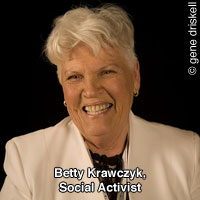
News |
- Canada Declares BPA Toxic
- Humans Using 1.5 Earths - Living Planet Report
- Spinning Climate Change as Positive: NRTEE Report
- Grassy Narrows Blockade Resumes
- Climate Change Negotiations in Tianjin, China
- 10.10.10 Global Work Party a Success
- Inuit Climate Champion named Transformative Canadians
- New National Energy Strategy for Canada
- Radioactive Waste Shipment a Dangerous Precedent
- Ottawa Panel to Review Oilsands
- Oilsands Need More Regulation: Cameron
- BC Great-Grandmother Appeals Conviction for Protesting
| Canada Declares BPA Toxic | 20 October 10 |
 Bisphenol A, or BPA, a chemical used to make hard plastic containers and toys, and coat inside food cans, was formally declared a toxic substance by Canadian authorities. The federal government added BPA to Canada's toxic substances list October 13th, 2010.
Bisphenol A, or BPA, a chemical used to make hard plastic containers and toys, and coat inside food cans, was formally declared a toxic substance by Canadian authorities. The federal government added BPA to Canada's toxic substances list October 13th, 2010.BPA mimics the hormone estrogen and does not occur naturally in the environment. Studies suggest that exposure to the chemical can ultimately lead to prostate or breast cancer. "We are continuing our leadership on this issue and Canadians can rest assured that we are working hard to monitor and manage Bisphenol A," Environment Minister Jim Prentice said in a statement. The government said the listing allows it to develop regulations to manage risks posed by BPA. Rick Smith, executive director of Environmental Defense Canada, applauded the announcement. "It's a great victory for every mom and dad who sent a letter to their MP demanding the federal government do a better job protecting the health of Canadians," Smith said. The toxic listing is the foundation for any legal action, said Smith, who predicted BPA will be removed from all food and beverage containers in a few years. In August 2010, Statistics Canada reported that measurable levels of BPA were found in the urine of 91 per cent of Canadians aged six to 79. View October 13, 2010 Environment Canada media releaseView October 13, 2010 New York Times article View October 13, 2010 CBC News article View October 13, 2010 National Post article View October 13, 2010 Environmental Defense media release Source: CBC News |
|
 Print version Print version |
Top |
| Humans Using 1.5 Earths - Living Planet Report | 18 October 10 |
 A new report shows populations of tropical species are plummeting and humanity's demands on natural resources are 50 per cent more than the Earth can sustain.
A new report shows populations of tropical species are plummeting and humanity's demands on natural resources are 50 per cent more than the Earth can sustain.The Living Planet Report 2010, conducted by WWF International and produced with the Zoological Society of London and the Global Footprint Network, uses the global Living Planet Index as a measure of the health of over than 2,500 species. The report ultimate states that humans would now need 1.5 planets to sustain their consumption patterns. "There is an alarming rate of biodiversity loss in low-income, often tropical countries while the developed world is living in a false paradise, fuelled by excessive consumption and high carbon emissions," states Jim Leape, Director General of WWF International. The report shows the United Arab Emirates had the largest footprint per average citizen in 2007, consuming the equivalent of 10.7 global hectares of resources. This was followed by Qatar (10.5 hectares per person), Denmark (8.3), Belgium (8.0), the United States (8.0), Estonia (7.9), Canada (7.0), Australia (6.8), Kuwait (6.3) and Ireland (6.3). If the global population continues growing and living beyond the Earth's limits by 2030, we will require the equivalent of two planets' productive capacity to meet our annual demands. View WWF Living Planet Report 2010 (PDF)View October 13, 2010 WWF article View October 14, 2010 Montreal Gazette article View October 13, 2010 The Guardian article View October 13, 2010 Globe and Mail article View October 13, 2010 CBC News article View October 19, 2010 Winnipeg Free Press article Source: WWF, Montreal Gazette |
|
 Print version Print version |
Top |
| Spinning Climate Change as Positive: NRTEE Report | 15 October 10 |
 Global warming will change the Canadian climate in both bad and good ways, according to a new publication, Degrees of Change from the National Roundtable on the Environment and the Economy (NRTREE) and the Royal Canadian Geographic Society. The Canadian Geographic, Suncor funded website for the report asks Canadians to 'embrace the concept of climate prosperity.'
Global warming will change the Canadian climate in both bad and good ways, according to a new publication, Degrees of Change from the National Roundtable on the Environment and the Economy (NRTREE) and the Royal Canadian Geographic Society. The Canadian Geographic, Suncor funded website for the report asks Canadians to 'embrace the concept of climate prosperity.'Climate prosperity is a new way of looking at climate change by admitting that there's a problem and trying not only to alleviate it, but also to mitigate it and prosper from that mitigation. "There are risks to climate change, clearly, but there are also opportunities," explains David McLaughlin, president of the NRTEE, "climate change is happening, and we can deal with it, and we can gain from it." Critics however note that for almost every benefit, there is also a downside. Canada may see a new breadbasket in the East at the cost of drought and desertification in the Prairies. Arctic shipping will become more feasible as the arctic continues to melt, but shipping through the Great Lakes and St. Lawrence Seaway will get more expensive, as lower water levels mean ships must carry smaller loads. Climate scientist Danny Harvey of the University of Toronto said "It is full of bad science and utterly downplays the serious impacts of climate change. How can we (Canada) talk about profiting from climate change when most of the world will suffer devastating impacts, in part because of our emissions? It is disgusting." View Government of Canada Climate Prosperity websiteView October 5, 2010, October 6, 2010 Globe and Mail article View October 6, 2010 Desmogblog.com article View October 2010 Canadian Geographic magazine View October 8, 2010 Inter Press Service News article Source: NRTEE, Government of Canada |
|
 Print version Print version |
Top |
| Grassy Narrows Blockade Resumes | 15 October 10 |
 This longest blockade in Canadian history, which has successfully stopped clearcut logging since 2002 on Grassy Narrows traditional territory is resuming more than eight years after it started.
This longest blockade in Canadian history, which has successfully stopped clearcut logging since 2002 on Grassy Narrows traditional territory is resuming more than eight years after it started.Since August 21, 2010 Grassy Narrows First Nation, in northwest Ontario has stopped the Ontario Ministry of Natural Resources (MNR) from interfering with community members who are maintaining a backroad used for fishing, hunting, trapping, and rice and berry harvesting. Ontario MNR has threatened to issue a stop work order if the First Nation does not purchase a gravel permit, citing environmental, public and worker safety concerns. "We have our own government here," said Roberta Keesick, capital projects manager for Grassy Narrows First Nation. "We support our chief and council – they are the authority here. They received their jurisdiction when they signed the treaty." Also Grassy Narrows Chief Simon Fobister issued a statement October 7, 2010 in opposition to Ontario Government plans to allow Weyerhaeuser to clearcut on Grassy Narrow's traditional territories. Logging was suspended on Grassy Narrows territory in July 2008. Now Ontario has produced a 3-year contingency logging plan for the Whiskey Jack Forest. "We have never given our consent to any logging on our territory, and we have repeatedly said 'no'," declared Chief Simon Fobister. "Unwanted logging has a severe impact on our community's ability to sustain our health, culture, and livelihood." View August 23, 2010 Grassy Narrows Clan Mothers press release (PDF)Listen to CBC North Radio news item (MP3) View October 6, 2010 Grassy Narrows Clan Mothers press release (PDF) View October 7, 2010 Grassy Narrows/Amnesty International joint press release View October 8, 2010 Greenpeace statement of support for Grassy Narrows View October 12, 2010 First Perspective - Drum News article Source: Grassy Narrows First Nation, Greenpeace |
|
 Print version Print version |
Top |
| Climate Change Negotiations in Tianjin, China | 14 October 10 |
 The fourth round of the 2010 United Nations (UN) climate change negotiations took place October 4th to 9th in Tianjin, China. The Tianjin UN Climate Change Conference is designed to prepare draft outcomes the for UN Climate Change Conference in Cancun, Mexico November and December 2010.
The fourth round of the 2010 United Nations (UN) climate change negotiations took place October 4th to 9th in Tianjin, China. The Tianjin UN Climate Change Conference is designed to prepare draft outcomes the for UN Climate Change Conference in Cancun, Mexico November and December 2010.During the meetings in Tianjin, participating delegates discussed long-term shared visions for international climate change work, abilities to adapted to the effects of climate change, reducing greenhouse gas emissions, key operational elements of climate finance and capacity building, and the future of the Kyoto Protocol. Discussions in Tianjin will be continued in Cancún later this year. The United Nations Framework Convention on Climate Change (UNFCCC) sessions were attended by over 2,500 participants from more than 176 countries, including government delegates, representatives from business and industry, civil society organizations and research institutions. The sixteenth Conference of the Parties (COP 16) and the sixth Conference of the Parties serving as the meeting of the Parties to the Kyoto Protocol (CMP 6) will be held in Cancun, Mexico, November 29th to December 10th, 2010. View UNFCCC - Tianjin, China MeetingsView Climate Action Network Tianjin Climate Talks Webpage View September 28, 2010 UNFCCC press release (PDF) View October 5, 2010 TckTckTck article View October 9, 2010 UNFCCC press release (PDF) View October 9, 2010 The Guardian article View October 12, 2010 IISD Earth Negotiations Bulletin (PDF) View October 2010 IISD Reports on Earth Negotiations View October 2010 Climate Action Network International report (PDF) View more information on Manitoba Wildlands Climate Change Meetings page Source: UNFCCC, TckTckTck, Climate Action Network |
|
 Print version Print version |
Top |
| 10.10.10 Global Work Party a Success | 14 October 10 |
 Citizens in 188 countries joined more than 7,000 Global Work Party events on October 10th, 2010, as a part of the 10.10.10 international campaign focused on local solutions to global climate change. The campaign is led by 350.org.
Citizens in 188 countries joined more than 7,000 Global Work Party events on October 10th, 2010, as a part of the 10.10.10 international campaign focused on local solutions to global climate change. The campaign is led by 350.org.The Global Work Party came together online through websites, social networks, and a largely volunteer team around the world. The goal of the Global Work Party was to inspire the world to rise to the challenge of the climate crisis. In the days surrounding the 10.10.10 Work Party, U.S. President Barack Obama, Maldivian President Mohamed Nasheed, and Illinois Governor Pat Quinn all committed to install solar on their official residences. Mexico City and Parisian Mayors committed to cut their city's emissions 10% over the next year. Other 10.10.10 Global Work Party highlights include:
"The size and spread of [the 10.10.10] events surprised even those of us organizing them. They demonstrate a continuing—a growing—hunger for real action on the most desperate problem the planet faces," states environmental writer and 350.org founder Bill McKibben. View October 11, 2010 350.org press releasesView October 11, 2010 Huffington Post article View October 11, 2010 Sydney Morning Herald article View October 10, 2010 Mercury News article View October 10, 2010 Toronto Sun article View October 9, 2010 Rabble.com article Source: 350.org, Huffington Post, Rabble.com |
|
 Print version Print version |
Top |
| Inuit Climate Champion named Transformative Canadians | 8 October 10 |
 The Transformational Canadians program aims to honor 25 living Canadians whose vision, leadership and actions have improved the lives of others.
The Transformational Canadians program aims to honor 25 living Canadians whose vision, leadership and actions have improved the lives of others.The first three winners announced October 4, 2010 included Inuit Climate Change activist Sheila Watt-Cloutier. Watt-Cloutier lives in Iqaluit, Nunavut, and was born into a hunting and fishing family in Kuujjuaq, a coastal Inuit community in Northern Quebec's Nunavik region. She has striven for more than 15 years to connect the health of the Arctic with global well-being. In 2005 she served a landmark petition against the United States to the Inter-American Council on Human Rights linking the devastating effects of climate change to the human rights of her fellow Inuit in the Arctic. "Today, everybody talks about climate change as a human-rights issue. I think we've been successful in making that connection. The style of leadership that I have is one of bringing people together and understanding that we're all one here. The planet and its people are one. It's interesting that it is our shared troubled atmosphere that is connecting us as a shared humanity," stated Watt-Cloutier. The other winners announced were: James Orbinski, a physician, humanitarian, scientist and author who received the 1999 Nobel Peace Prize on behalf of Doctors Without Borders; and stem-cell biologist Dr. Gordon Keller. Nominations close Friday, Nov. 26, 2010; an overview of all 25 will appear in the January 3, 2011 Globe and Mail. View October 4, 2010 Globe and Mail articleView September 13, 2010 Globe and Mail call for nominations View list of Transformative Canadians on Globe and Mail website Nominate a Transformational Canadian Source: Globe and Mail |
|
 Print version Print version |
Top |
| New National Energy Strategy for Canada | 8 October 10 |
 The David Suzuki Foundation, the Canadian Academy of Engineering and the Trottier Family Foundation have formally launched a partnership called the Trottier Energy Futures Project.
The David Suzuki Foundation, the Canadian Academy of Engineering and the Trottier Family Foundation have formally launched a partnership called the Trottier Energy Futures Project.The partnership will develop a sustainable energy strategy for Canada, one that achieves science-based greenhouse gas reduction targets, makes Canada a global role model in sustainable energy generation, distribution, and energy use, while ensuring all Canadians have access to sustainable energy. The David Suzuki Foundation and Canadian Academy of Engineering will be supplying services in kind to match Trottier's $2.5-million contribution to the venture. Lorne Trottier, engineer and co-founder of Matrox, states the project seeks to offer objective information about energy options in a transparent and open process. "We want to produce a greener energy system for Canada and we are going to be as objective as possible in analyzing the various alternatives," says Trottier. "The goal is to influence public policy, and to achieve that we need to bring Canadians into the energy debate", said Michael Charles, president of the Canadian Academy of Engineering. "We need to engineer widely accepted solutions that reduce negative environmental impacts of the energy sector, while maintaining the social and economic well-being of Canadians." View September 23, 2010 David Suzuki articleView September 16, 2010 Montreal Gazette article View September 16, 2010 Trottier Energy Futures press release View Trottier Energy Futures Project Paper Source: Montreal Gazette, Trottier Energy Futures |
|
 Print version Print version |
Top |
| Radioactive Waste Shipment a Dangerous Precedent | 6 October 10 |
 The Canadian Nuclear Safety Commission (CNSC) held public hearings in Ottawa September 28-30 to consider Bruce Power Inc's request to ship 16 radioactive generators across the Great Lakes and St. Lawrence River to be recycled overseas.
The Canadian Nuclear Safety Commission (CNSC) held public hearings in Ottawa September 28-30 to consider Bruce Power Inc's request to ship 16 radioactive generators across the Great Lakes and St. Lawrence River to be recycled overseas."Do we really want the Great Lakes and the Saint Lawrence to become routine transportation routes for radioactive debris for decrepit nuclear reactors?" asked Kevin Kamps, a researcher for Washington-based Beyond Nuclear. Environmental groups, opposition politicians, aboriginal leaders and mayors of 100 towns and cities along the proposed route through Lake Huron, Lake Erie, Lake Ontario and the Saint Lawrence seaway, fear contamination of lakes that provide drinking water for 40 million people in Canada and the United States. Gordon Edwards of the Great Lakes United Task Force on Nuclear Power and Green Energy highlighted the dangerous precedent allowing this shipment would set. "This is just the tip of an enormous iceberg because once they ship these 16 steam generators, they're going to be shipping more and more and more radioactive waste," explained Edwards. "We're talking about 200,000 kg of nuclear waste, transporting it several thousand kilometers. Melting it down for recycling will result in some radioactive material getting into the general recycling of metals around the world." said John Bennett, Sierra Club of Canada spokesperson. "Canada's policy for nuclear waste is that the waste remains where it is until there is an ultimate solution for Canadian waste. This is just a way to reduce costs for Bruce Power," Bennett said. View CNSC Hearing DocumentsView September 27, 2010 Toronto Sun article View September 28, 2010 CTV News article View September 28, 2010 Toronto Star article View October 2, 2010 Chatham Daily News article View July 27, 2010 London Free Press article Sources: CNSC, Toronto Sun |
|
 Print version Print version |
Top |
| Ottawa Panel to Review Oilsands | 6 October 10 |
 Canada's Environment Minister, Jim Prentice, has announced the appointment of a six-person advisory panel to look into the water monitoring in the Athabasca River around Alberta's oilsands. The Advisory Panel will advise Minister Prentice on environmental monitoring in the oil sands and make recommendations to ensure monitoring and best practices are implemented. The panel has 60 days to make its recommendations.
Canada's Environment Minister, Jim Prentice, has announced the appointment of a six-person advisory panel to look into the water monitoring in the Athabasca River around Alberta's oilsands. The Advisory Panel will advise Minister Prentice on environmental monitoring in the oil sands and make recommendations to ensure monitoring and best practices are implemented. The panel has 60 days to make its recommendations.The oilsands advisory panel is chaired by Elizabeth Dowdeswell, president of the Council of Canadian Academies and former president of the United Nations Environment Programme. The panel also includes:
Recently a peer-reviewed (University of Alberta) study by water scientist David Schindler found elevated levels of cadmium, mercury, lead and other toxic elements in the Athabasca River. "It's the first time we've really seen the federal government step up to the plate and show a genuine interest in environmental impacts," states Pembina Institute policy analyst, Terra Simieritsch. "However, we continue to see governments approve more development in the oilsands arena, despite the fact that there are signs pointing to this type of pollution." Alberta Premier Ed Stelmach also has begun appointing a scientific panel to review water-monitoring data from the oilsands region, however, the panel's review will not be completed until February 2011. View October 1, 2010 CBC News articleView September 30, 2010 Globe and Mail article View September 30, 2010 Environment Canada news release View September 24, 2010 Government of Alberta press release View Sierra Club Comments on Federal Government Scientific Panel View Environment Canada Backgrounder Visit Beaver Lake Cree Nation Website Visit Coastal First Nations Website Visit Indigenous Environmental Network Website Visit Pembina Institute Website Source: CBC, Globe and Mail, Government of Canada |
|
 Print version Print version |
Top |
| Oilsands Need More Regulation: Cameron | 1 October 10 |
|
Alberta should put a moratorium on approving new tailings ponds until the science based regulation is better handle the waste from oilsands mining, Avatar director James Cameron suggested September 30, 2010 after a three-day tour of the controversial oil fields. Reclamation of oil sands tailings ponds isn't sufficiently viable — either economically or scientifically — to offset the environmental impact of oil sands mining, and the province needs to regulate the industry more closely, he added. "[The oilsands deposit] will be a curse if it's not managed properly. It can also be a great gift to Canada and to Alberta, if it is managed properly," Cameron told a news conference in Edmonton. The Canadian-born director, whose blockbuster science fiction film Avatar tells a cautionary tale of corporate greed and the consequences of a fight over natural resources, was joined by a number of First Nations leaders. They included the national chief of the Assembly of First Nations, Shawn Alteo; Al Lameman, the chief of the Beaver Lake Cree First Nation; Gerald Amos of the B.C.-based Coastal First Nations Alliance, and activist and former Mikisew Cree chief George Poitras. "Any movement forward must include real, not token, involvement from First Nations people," says Cameron. View September 28, 2010 CBC News articleView September 29, 2010 Edmonton Journal article View September 29, 2010 Canadian News Wire article View September 30, 2010 Globe and Mail article View September 30, 2010 CTV News article View September 30, 2010 Calgary Herald article View October 1, 2010 Huffington Post article and video Visit Beaver lake Cree Nation website Visit Coastal First Nations website Visit Indigenous Environmental Network website Source: CBC News, Globe and Mail, Huffington Post, Edmonton Journal |
|
 Print version Print version |
Top |
| BC Great-Grandmother Appeals Conviction for Protesting | 29 September 10 |
 At the tender age of 82, Betty Krawczyk, a long-time Vancouver based social activist, ecowarrior, women's rights advocate, and great-grandmother is no stranger to prison. Mrs. Krawczyk's has been convicted for criminal contempt on five separate occasions for blocking logging operations.
At the tender age of 82, Betty Krawczyk, a long-time Vancouver based social activist, ecowarrior, women's rights advocate, and great-grandmother is no stranger to prison. Mrs. Krawczyk's has been convicted for criminal contempt on five separate occasions for blocking logging operations.Her most recent incarceration ended in September 2007 when Krawczyk stepped out of the B.C. Alouette Correctional Centre for Women after serving seven months behind bars for criminal contempt of court. The charge revolved around Krawczyk defying a court injunction to stay away from West Vancouver's Eagleridge Bluffs, which were being bulldozed to widen the Sea-to-Sky Highway ahead of the 2010 Winter Olympics. Upon release Krawczyk launched an appeal on the basis her breach of the court order was protected by her right to freedom of expression under the Charter of Rights and Freedoms. The B.C. Court of Appeal dismissed the case in 2009, and further leave to the Supreme Court of Canada was denied in 2010. Krawczyk, appealed her sentence seeking a new trial on the basis she was sentenced to ten months (serving seven) when the law says six months is the maximum for conviction under the summary process used in her trial. Krawczyk and her supporters were particularly upset the B.C. Attorney General took the position, citing case law that involved repeat pedophilia offenders, that if the sentence was to be re-examined it should be elevated upward because Krawczyk's repeat offenses meant she could be declared a dangerous offender and possibly put away for life. Krawczyk and her supporters held a rally on the steps of the Courthouse before Krawczyk's most recent court appearance September 22, 2010. Judgment was reserved, and will be released at a later date. Listen to the CBC Radio podcast (mp3)View September 20, 2010 Rabble.ca article View September 22, 2010 Straight.com article View September 24, 2010 National Post article View September 25, 2010 Vancouver Sun article View September 26, 2010 Environmental News Service article View B.C. Supreme Court Decision R. v. Krawczyk, 2007 BCSC 2011 (Conviction) View B.C. Supreme Court Decision, R. v. Krawczyk, 2007 BCSC 345 (Sentencing) View B.C. Court of Appeal, R. v. Krawczyk, 2009 BCCA 250 (Appeal) View Supreme Court of Canada, 2010 S.C.C. 25908, Betty Krawczyk v. Her Majesty the Queen Source: Rabble.ca, Straight.com |
|
 Print version Print version |
Top |


 RSS Feeds:
RSS Feeds:
